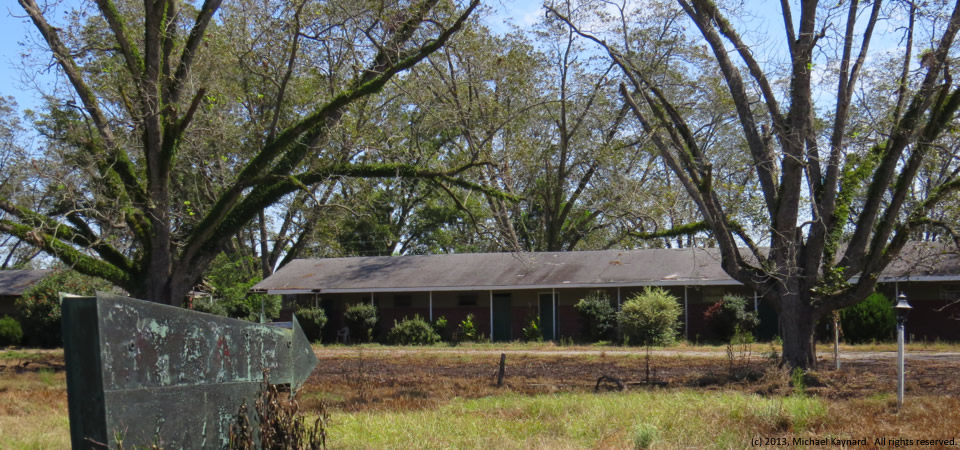
Doesn’t this abandoned motel look plain spooky — a place NOT to be on Halloween?
It’s in rural Screven County, Ga., about 12 miles south of the county seat, Sylvania, at the intersection of U.S. Highway 301 and Georgia Highway 17. Next to the hotel is the abandoned Paradise Restaurant, that kind of reminds us of the Lobster House, also in Highway 301, about 45 minutes northeast.
Screven County got started after the Revolutionary War and soon became part of the Black Belt of Georgia where cotton became an important staple crop tended by enslaved African Americans.
The county’s population jumped from 3,019 in 1800 to 8,274 by 1860, according to Census figures. While it had 14,593 people in 2010, the county lost an estimated 391 people — 2.7 percent — by 2012, according to the U.S. Census. In 2010, Some 25.4 percent of county residents lived below the federal poverty level, 9 points higher than the state average.
Photo taken Sept. 23, 2013, by Michael Kaynard. All rights reserved.
















